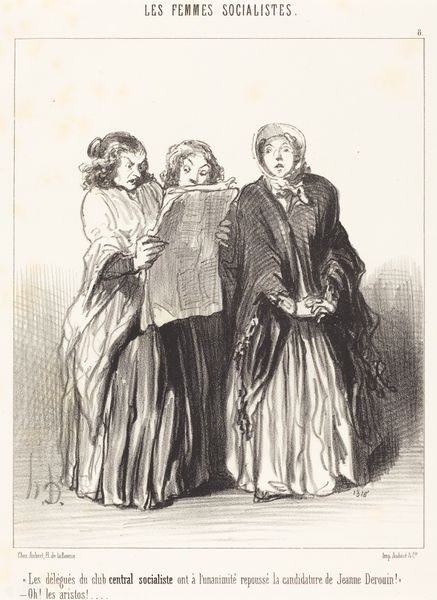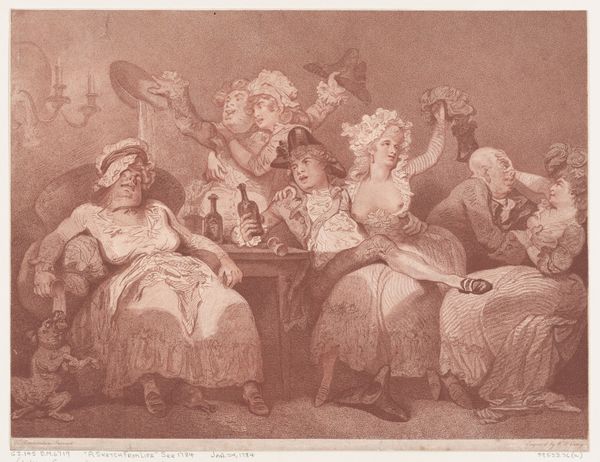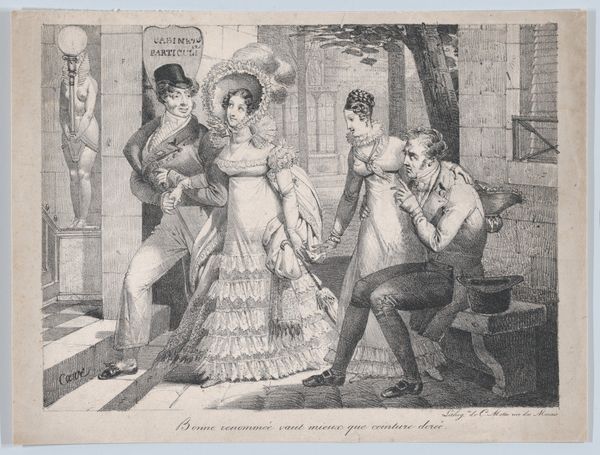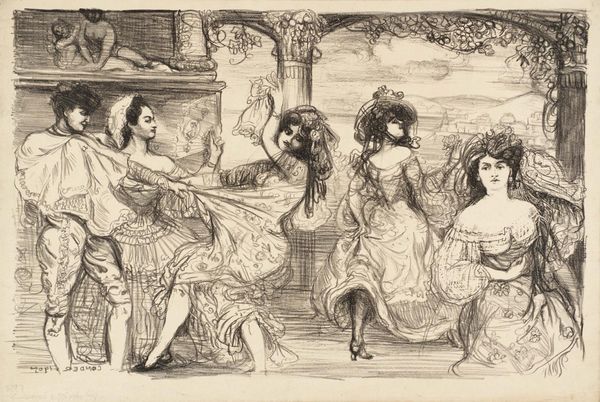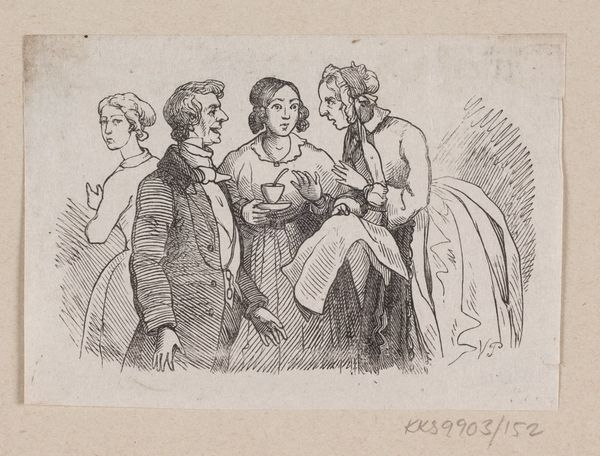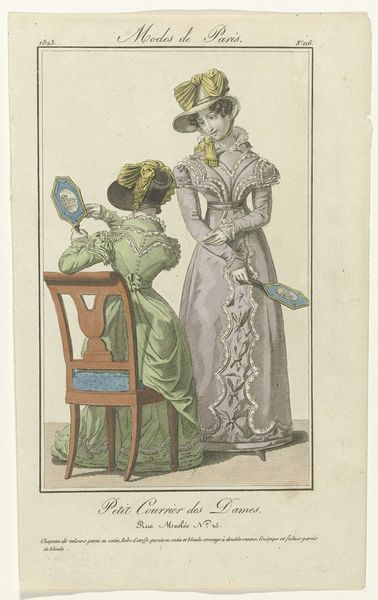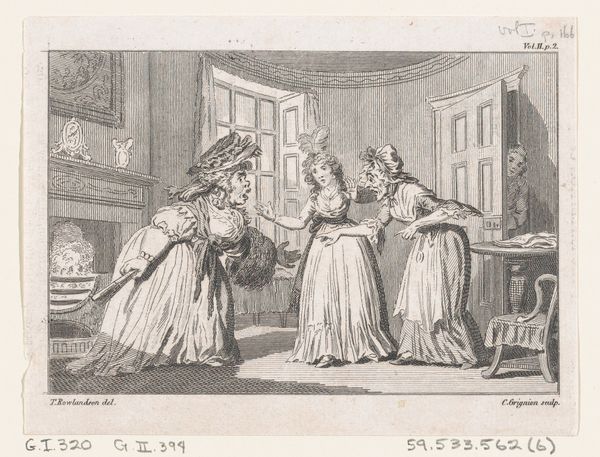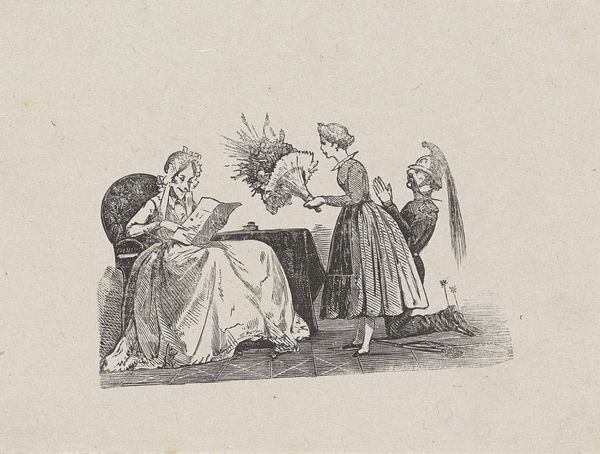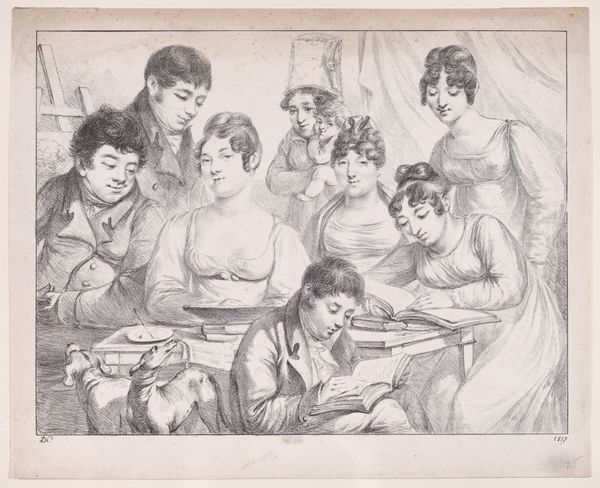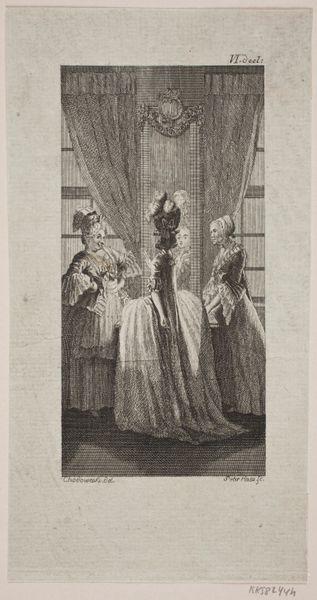
Group of three figures, man and two women 1817
0:00
0:00
drawing, print
#
portrait
#
drawing
# print
#
group-portraits
#
romanticism
#
portrait drawing
#
history-painting
Dimensions: Sheet: 10 11/16 × 13 11/16 in. (27.1 × 34.8 cm)
Copyright: Public Domain
Editor: So this is "Group of three figures, man and two women," a drawing from 1817 by Baron Dominique Vivant Denon, housed here at the Met. The body language is really striking. It almost feels like we’re intruding on a private moment, do you agree? What do you make of this piece? Curator: Intrusion is an interesting starting point. This intimate grouping, rendered with such delicate lines, evokes the societal constraints of the era. Observe how the seated women are positioned – one glancing almost secretively at the other, who in turn, seems to ignore her entirely. What visual clues hint at this quiet narrative, perhaps unspoken desires, within the seemingly proper setting? Editor: The way the woman on the right leans in does seem to create this sense of suppressed intimacy. And the man, almost separated by the... chair or box? What is he observing? Curator: Precisely. The "box" –likely part of the interior decor, or perhaps a traveling litter—isolates him somewhat, doesn't it? The expressions of the three characters hint at something left unsaid, a hallmark of Romanticism's focus on the individual and subjective emotion. He may have been included as part of the composition, but consider the role of 'witness', ever present, yet excluded. Is he also confined? How does his separation change the piece, do you think? Editor: It adds a layer of melancholy, perhaps? It is very clever the way it evokes that feeling. I wonder, does the feathered hat carry symbolic significance? Curator: Absolutely! Feathers often symbolize status and femininity. In this period, such adornments were a clear visual marker of the upper class, broadcasting an unspoken claim of identity. Are they free, do you think, or bound to this stage setting? What message would it carry to other audiences of the period? Editor: It all seems more complex than I initially thought! There are so many silent signifiers within what looks, at first glance, like a simple group portrait. Curator: Indeed. This piece unveils a nuanced glimpse into the social dynamics and unspoken sentiments prevalent in the era, demonstrating the artist’s attention to conveying cultural values. The symbolism prompts us to ponder the unacknowledged complexities of human relationships.
Comments
No comments
Be the first to comment and join the conversation on the ultimate creative platform.
